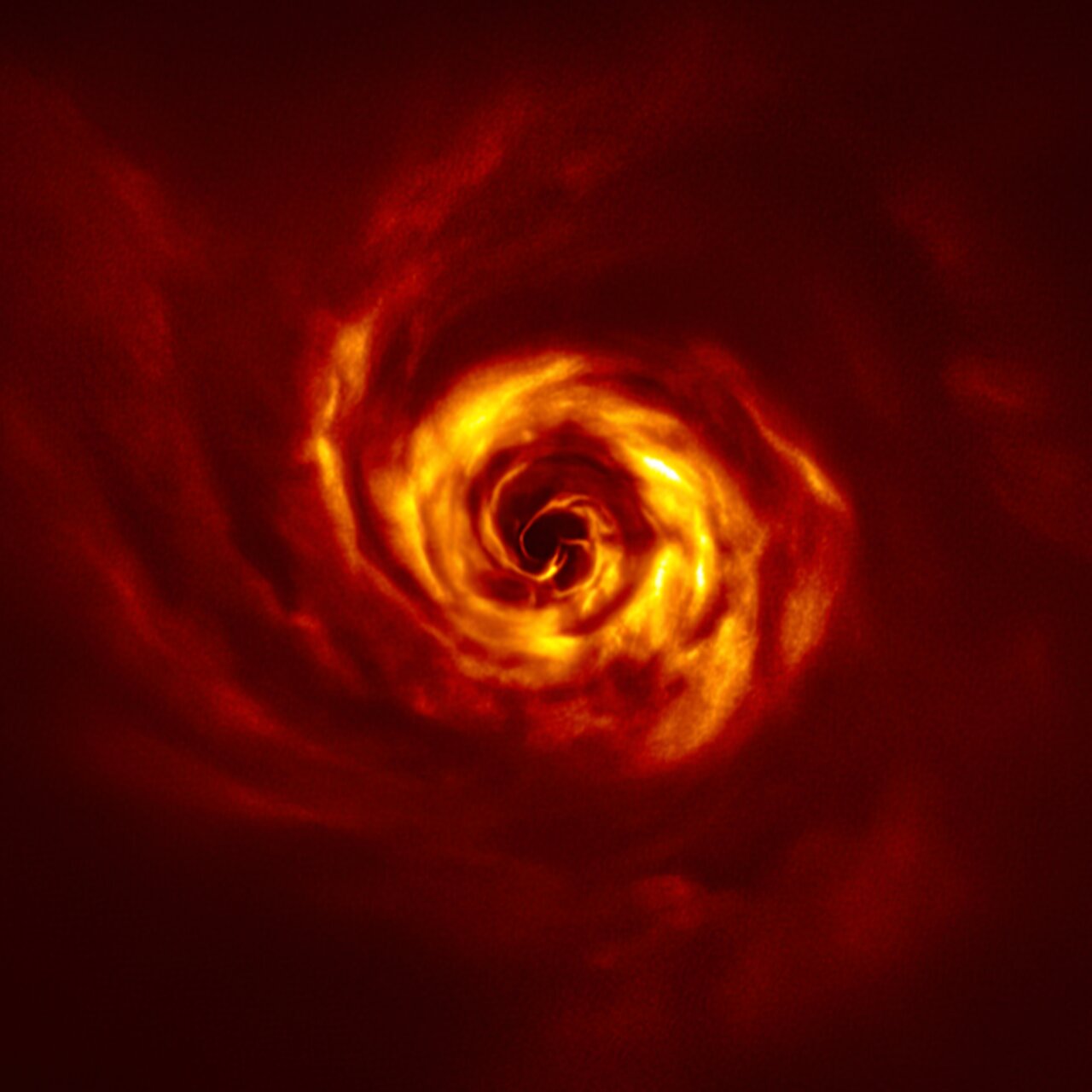The news: Astronomers have made what are possibly the first ever observations of a planet in the process of being born. The newly released images are of a very young star system called AB Aurigae, about 520 light-years away. They show a massive disc of swirling gas and dust. The disc features a prominent twist that could indicate where a new planet is forming. The findings were reported today in the journal Astronomy & Astrophysics.
How did they make the discovery? AB Aurigae was observed a few years ago through the Atacama Large Millimeter/submillimeter Array in Chile. Those images showed two long spirals of gas close to the star, spurring scientists to follow up with the ESO’s Very Large Telescope (also in Chile). This telescope is armed with an instrument called SPHERE, which can view faint light reflected by small dust grains and emissions originating from the star system’s inner disc.
Do the “twist”: SPHERE’s images confirmed the presence of the spirals, and also showed the twist indicating that the spiral arms are connected. It is these spirals that let other gas and dust moving through the young star system accrete onto the planet-to-be, which slowly grows into something fully formed and mature.
Don’t settle for half the story.
Get paywall-free access to technology news for the here and now.
